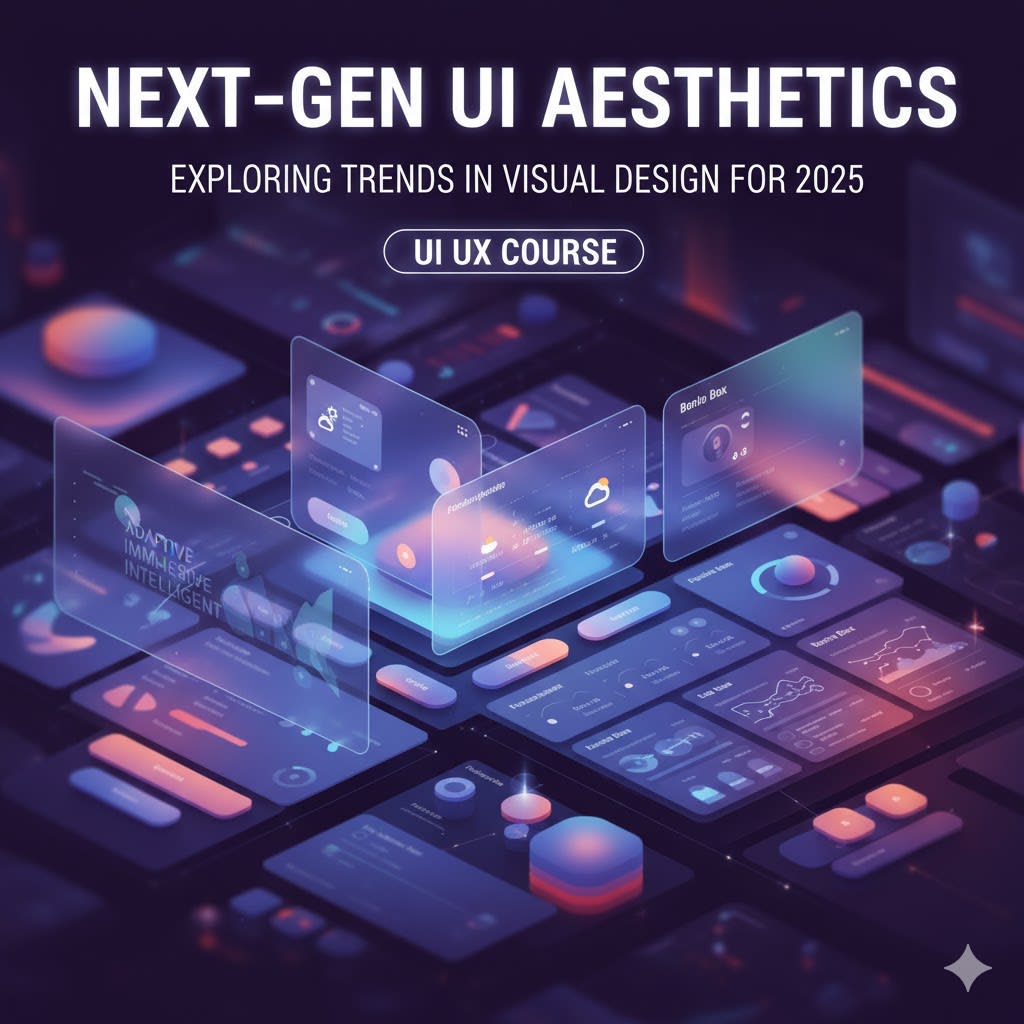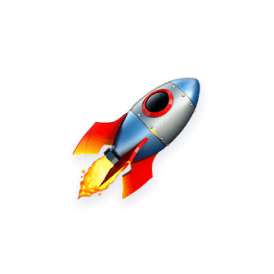Next-Gen UI Aesthetics: Exploring Trends in Visual Design for 2025
Next-Gen UI Aesthetics: Exploring Trends in Visual Design for 2025
The digital landscape is undergoing a profound transformation. As we move into 2025, User Interface (UI) Design is no longer just about clean, flat aesthetics; it's about creating Adaptive Interfaces that are personalized, deeply immersive, and driven by intelligent technology. For anyone building a career in UX Design or considering a UI UX course to master the latest techniques, understanding these shifts is crucial. Understanding these shifts is crucial.
Here are the four key trends defining the visual design of tomorrow, blending technology, tactility, and user-centricity.
1. The Blurring of Digital and Physical: New Forms of Morphism
After years of flat design, users crave interfaces that feel more tangible and multi-layered. This renewed interest in depth and texture is giving rise to sophisticated versions of old styles.
Glassmorphism Refined: Expect to see a more mature and accessible application of the "frosted glass" effect. Using subtle transparency, background blur, and soft shadows, this aesthetic creates a sleek, layered depth. It’s ideal for conveying Visual Hierarchy in complex data dashboards or premium apps where elements need to float above content subtly. Crucially, designers are focusing on higher contrast to pass Accessibility standards, avoiding the low-contrast pitfalls of earlier versions.
Claymorphism and Soft 3D: This trend embraces soft, rounded, and slightly inflated 3D elements, often using pastel colors and smooth lighting. It gives on-screen components a friendly, touchable quality, making interfaces feel warm and approachable. This style is particularly effective in engaging Microinteractions and interactive product displays.
2. AI-Driven Adaptive Aesthetics & Personalized UI
Artificial Intelligence is moving beyond the backend to change how interfaces look and behave in real-time fundamentally. The goal is a Proactive UX (PX) that anticipates user needs before they're explicitly requested.
Contextual Layouts: UIs will dynamically rearrange and prioritize information based on the user’s context—location, time of day, current task, or even emotional state. A fitness app, for example, might automatically surface recovery metrics and a deep Dark Mode interface if it detects the user is accessing it late at night after a tough workout.
Signaling Intelligence: Designers are developing visual cues—often subtle gradients, unique loading animations, or distinct typography—to clearly distinguish between human-authored content and elements generated by AI. This emphasis on transparency is a key element of building trust in the next generation of intelligent User Experience systems.
3. Asymmetry, Macro-Typography, and Modular Grids
Visual identity is becoming bolder and more expressive, using classic design principles in rebellious new ways.
The Bento Box Layout: Moving away from rigid, single-column structures, the "Bento Box" layout uses a modular, multi-panel grid system to compartmentalize diverse content. This structure is excellent for improving Information Architecture (IA) and Usability, as it gives each content block clear visual boundaries and allows for easy scanning of multiple data types at a glance.
Kinetic and Macro-Typography: Typography is stepping up as a primary visual element. Expect oversized, expressive headline fonts (Macro-Typography) used for dramatic effect and brand emphasis. Furthermore, the use of Kinetic Typography (animated type that subtly shifts in weight or form) adds a dynamic layer to storytelling and guides the user's attention through transitions.
4. Immersive Interactions and Multi-Sensory Feedback
The rise of spatial computing and more powerful mobile hardware is pushing Interaction Design into the 3D space, making UIs feel less like a screen and more like a space to move within.
Functional 3D: Interactive 3D objects and environments are becoming standard, especially in e-commerce and educational platforms. These elements, often rendered seamlessly via technologies like WebGL, allow for full product exploration and provide a sense of tangibility that static 2D designs cannot match.
Voice and Gesture First: As interfaces move onto new devices (like AR/VR headsets and ambient screens), Zero-UI concepts—where interactions rely on voice, subtle gestures, or contextual awareness—are shifting the Visual Design focus from clicks to clear, non-intrusive feedback and status indicators.
Elevate Your Skills for the Future
The aesthetics of 2025 require designers to be cross-functional—blending artistic flair with technical and analytical rigor. The most successful professionals will be those who can design stunning Visual Design while implementing robust Design System methodologies and passing demanding Usability Testing.
13 Oct 2025







